#UNCLOS
Explore tagged Tumblr posts
Text
Hi! I created a Tumblr account just for this reason—I want to freely express my opinions without worrying about others judging me. My Facebook is full of college friends and relatives, and I’m not sure if they would appreciate my opinions on certain topics.
I've got a lot on my plate, but when I opened Google News and saw that the Chinese Air Force dropped flares in the path of the Philippine Air Force, it made me stop and think: What can I do to help? How will this affect me? How will this affect my family?
I'm a bit concerned about what our government's next move will be. According to ABS-CBN News, they plan to discuss this within the week and come up with an appropriate response.
China always mentions that they want this issue resolved peacefully, but their actions suggest otherwise. If the Philippines allows itself to be bullied while under the watch of our allies, China may perceive us as a mere speck they can easily disregard. Although I hope this never leads to war, the ongoing tensions over this territorial dispute make me anxious, especially considering our limited equipment.
I don't want my husband to go to war. We have young children, and if other countries or UNCLOS allow China to be aggressive, it would show a disregard for the 2016 arbitration ruling and international laws. This would also suggest that China could easily capture Taiwan. It's been several years since the ruling, yet China continues to create tension. This situation could significantly impact my work and our future.
I will end this by saying that I'll pray for our country's safety. Even though we are clearly being bullied, I hope our president and other leaders will wisely and strategically plan their next move. Their decisions are unclear to me, especially after a recent video showed Chinese Coast Guard personnel taking or stealing firearms from the Philippine Coast Guard without any response from our side. It makes me wonder if they are waiting for a serious incident, like the loss of life, before they take a firm stand for our country.
Here's the link: https://news.abs-cbn.com/news/2024/8/12/agricultural-goods-without-permits-confiscated-in-naia-boc-034
2 notes
·
View notes
Text
Tensions Escalate in the West Philippine Sea Again!
Chinese Vessels Swarm Philippine Waters Manila, Philippines – Over the past 26 hours, the West Philippine Sea has witnessed heightened tensions as the Philippine Coast Guard (PCG) reported aggressive maneuvers by Chinese maritime forces, underscoring the ongoing territorial dispute with Beijing. The situation, centered around Rozul Reef and Panatag (Scarborough) Shoal, highlights the…
#Arbitral Award#chinese maritime militia#Marcos#Panatag Shoal#Philippine Coast Guard#Rozul Reef#south-china-sea#Sovereignty#UNCLOS#West Philippine Sea
0 notes
Text
Τουρκία: ο θρασύδειλος νταής της Ανατολικής Μεσογείου
Η ανακοίνωση του Χωροταξικού Σχεδιασμού από τη χώρα μας, με την οποία για πρώτη φορά αποτυπώνει τα όρια της υφαλοκρηπίδας/ΑΟΖ που δικαιούται βάσει του Δικαίου της Θάλασσας προκάλεσε την, αναμενόμενη, τουρκική αντίδραση! Η γειτονική χώρα αφού παρουσίασε τον δικό της χάρτη με τον οποίο «οικειοποιείται» το μισό Αιγαίο, προχώρησε σε μια σειρά από δηλώσεις Υπουργείων, οι οποίες πάντως δεν είχαν την…

View On WordPress
#Έλληνες#ΑΟΖ#Αιγαίο#Ερντογάν#ΕΕ#Ελλάδα#Θαλάσσιος Χωροταξικός Σχεδιασμός#ΟΗΕ#Τουρκία#Τουρκολυβικό Μνημόνιο#Υφαλοκρηπίδα#UNCLOS
0 notes
Text
Scarborough Shoal: A Microcosm of South China Sea Tensions
A team of navy personnel and three Philippine congressmen standing on a tiny rock in the Scarborough Shoal with a Filipino flag in protest at Chinese land grabbing (AFP/Getty Images) Geographical Significance of Scarborough Shoal Scarborough Shoal, a collection of rocks and reefs encompassing a valuable lagoon, occupies a geographically significant position in the South China Sea, with…
0 notes
Text
The United Nations Convention on the Law of the Sea (UNCLOS)
Click here to check the law of the sea...
#sea laws by united nation#UNCLOS#what is UNLOS#sea laws#laws bu united nation#ocean laws by united nation#marine laws#international ocean law by UN#international sea laws
0 notes
Text
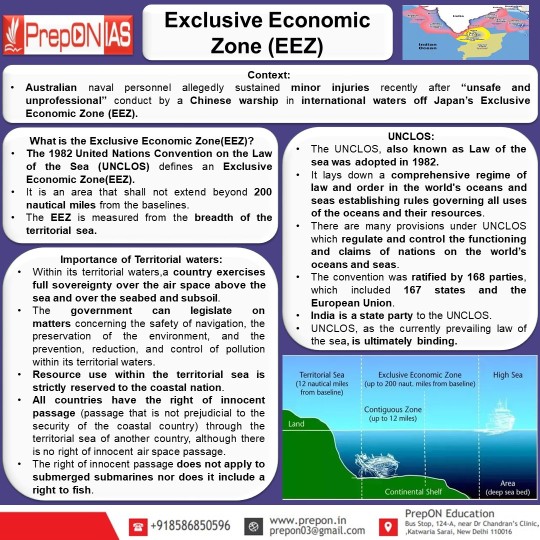
Exclusive Economic Zone (EEZ)
#ExclusiveEconomicZone#EconomicZones#austrialia#japan#UNCLOS#internationalwaters#TerritorialWater#upsc#upscprelims#upscprelims2024#upscexam#upsc2024#upscaspirants#currentaffairs2023#dailynews#generalknowledgeindia
0 notes
Text
Philippines Prevails: Defying China's Aggression
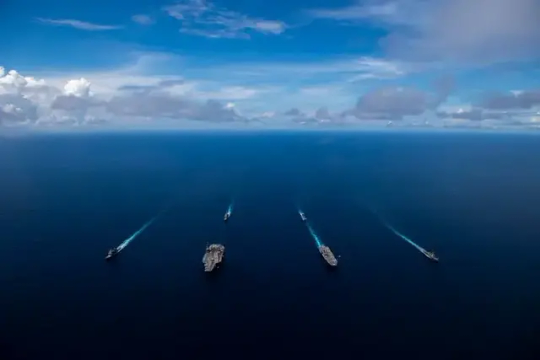
A Defiant Stand Against Repeated Harassment
In a resolute declaration, the United States pledged unwavering support to its Philippine ally as tensions escalated in the South China Sea. The People's Republic of China's (PRC) repeated harassment in the region has raised concerns, with the U.S. emphasizing its commitment to standing shoulder-to-shoulder with the Philippines. International Tribunal Rejects PRC's Claims The PRC's actions, deemed inconsistent with international law, have faced condemnation. The 2016 ruling by an international tribunal, binding on both the Philippines and the PRC, emphatically stated that the PRC holds no lawful territorial or maritime claim to the Second Thomas Shoal. The call for respecting high seas freedoms of navigation reverberates as the United States urges the PRC to adhere to international law.
Mutual Defense Treaty Strengthens Resolve
Reaffirming the strength of the U.S.-Philippines alliance, the United States highlights the applicability of Article IV of the 1951 U.S.-Philippines Mutual Defense Treaty. This extends protection to armed attacks on Philippine armed forces, public vessels, or aircraft, including those of its Coast Guard, anywhere in the South China Sea. Historical Agreements Cement Alliance The US-Philippines Enhanced Defense Cooperation Agreement (EDCA), signed in 2014, plays a pivotal role. Allowing the U.S. military access to Philippine military bases, including those in the South China Sea, this agreement bolsters the strategic partnership between the two nations.
The Legal Battle and International Support
Philippines Prevails in UNCLOS Arbitration In 2016, the Philippines initiated arbitral proceedings under the United Nations Convention on the Law of the Sea (UNCLOS) against the PRC's nine-dash line claim to the South China Sea. Subsequently, in a landmark decision in 2020, the Permanent Court of Arbitration (PCA) ruled decisively in favor of the Philippines. The PCA deemed the PRC's claim invalid and explicitly acknowledged violations of the Philippines' sovereign rights in its exclusive economic zone (EEZ). Importantly, the United States stands unwaveringly firm in its support of the PCA ruling, considering it not only "final" but also "legally binding."
Philippines-China Tensions in Recent Years
Escalating Conflicts in the South China Sea The PRC's actions in the South China Sea have escalated tensions, creating conflict situations in recent years. Seizure of Scarborough Shoal In 2016, the PRC seized Scarborough Shoal, a Philippine-controlled reef, amplifying territorial disputes in the region. Militarization and Harassment Subsequent years saw the PRC engaging in militarization efforts, constructing artificial islands and military facilities on disputed reefs and shoals. The PRC's Coast Guard further intensified the situation in 2018, harassing and blocking Philippine vessels and resupply missions in the South China Sea. Provocative Actions and Collisions The situation reached a boiling point in 2021 when the PRC's Coast Guard fired water cannons at a Philippine Coast Guard vessel. In 2023, dangerous maneuvers by the PRC's Coast Guard near Philippine vessels resulted in collisions, endangering Filipino lives and escalating the risk of accidents in the South China Sea. In summary, the United States' unequivocal support for the Philippines comes at a crucial juncture, with legal rulings and historical agreements reinforcing the alliance against the backdrop of escalating tensions in the South China Sea. Sources: THX News & US Department of State. Read the full article
#ArticleIV#DangerousManeuvers#DefenseCooperation#HighSeasFreedoms#Internationallaw#MutualDefenseTreaty#PhilippineBases#Philippines-ChinaTensions#PRC'sActions#ScarboroughShoal#SecondThomasShoal#SouthChinaSeatensions#TerritorialDispute#UNCLOS#USMilitaryAccess#US-PhilippinesAlliance
0 notes
Text
The pillaging in the war on Gaza:
Israel as an occupier has no right to award licences in areas that it does not hold sovereignty over under any circumstances.
Palestine is a party to the UN Convention on the Law of the Sea (UNCLOS) and has declared its maritime boundaries in accordance with these principles.
#palestine#palestinians#gaza#genocide#israeli apartheid#israeli occupation#free palestine#free gaza#war crimes#justice#idf terrorists#iof terrorism#unrwa#unclos#oil and gas#license#illegal#illegal occupation#icj#icc#the dispossessed#state sponsored terrorism#state sponsored theft#natural gas#us weapons#us complicity#uk complicity#europe
21 notes
·
View notes
Text
Philippines and China: Conflicts in the South China Sea
Dateline: May 21, 2025 — Manila The South China Sea remains a theater of escalating tensions, with recent events underscoring the fragile state of regional stability. In April 2025, Chinese forces raised their national flag over Sandy Cay, a disputed sandbar near the Philippine-held Thitu Island. This act coincided with joint U.S.-Philippine military exercises and was criticized by the U.S. as…
#china-philippines tensions#Chinese Coast Guard#diplomatic relations#freedom of navigation#international law#Maritime Disputes#military exercises#Philippine Navy#regional security#South China Sea#Southeast Asia geopolitics#territorial sovereignty#U.S.-Philippines alliance#UNCLOS#West Philippine Sea
0 notes
Text
Οι Τούρκοι ζητούν και τα μαλλιά της κεφαλής μας: Τι απάντησαν στον κ. Γεραπετρίτη; Δεν είναι δυνατό να περιοριστούν οι διαφορές στο Αιγαίο σε ένα μόνο θέμα, τα απαιτούν όλα…
Του ΤΑΣΟΥ ΠΑΠΑΔΟΠΟΥΛΟΥ – Αθήνα…https://hellasjournal.com/ Την εβδομάδα που διέρρευσε ήταν καθαρά τα διαφαινόμενα αδιέξοδα των ελληνοτουρκικών συνομιλιών, πριν από την συνάντηση των υπουργών Εξωτερικών, Γιώργου Γεραπετρίτη και Χακάν Φιντάν που προγραμματίζεται για τον ερχόμενο μήνα στην Αθήνα. Από την πλευρά του ο Έλληνας υπουργός Εξωτερικών σε συνέντευξή του στην Καθημερινή, την Κυριακή 6…

View On WordPress
#12ΝΜ#Casus belli#FIR#Έλληνες#ΑΟΖ#Αιγαίο#Ελλάδα#Νησιά Ανατολικού Αιγαίου#Ρετζέπ Ταγίπ Ερντογάν#UNCLOS
0 notes
Text
World’s Top Five Mightiest Icebreaker Fleets

© Sputnik/Vladimir Astapkovich/Go to the Mediabank
In December 2023, the United States unilaterally announced a claim to a huge chunk of seabed well outside its internationally-recognized boundaries off the northern coast of Alaska. Does the US have the resources to enforce its claim? And how do its capabilities stack up against those of other major maritime powers? Sputnik explores.
The State Department has a problem. Firstly, to legally protect its encroachment on the piece of seabed in the Arctic which it claims as part of its continental shelf, Washington would have to pay lip service to the 1982 United Nations Convention on the Law of the Sea, which outlines the rules for states claiming continental shelves beyond the internationally recognized 200 nautical mile limit. The first rule? Signing and ratifying the treaty, and only ten years after that submitting claims.
Secondly, if it proceeds with its continental shelf claims without UN approval, the US would have to be able to protect its claims by the tangible threat of force, including by using ships and aircraft capable of patrolling the area. The US claim announced in December is not expected to create any disputes with Russia, but will overlap with Canada over a piece of the floor of the Beaufort Sea off the Northwest Territories.
Unfortunately for Washington, its geopolitical appetites don’t appear to match its capabilities. Not only is its icebreaker fleet surprisingly tiny, but, according to recent reports, its engineers have apparently forgotten how to reliably produce the thick, hardened steel needed to reinforce Arctic-going ships’ hulls.
For these and other reasons, including decades of neglect of its existing icebreaker potential, the United States just barely scrapes into the list of top five countries by icebreaker capability.
#5: United States 🇺🇸
America’s national icebreaker fleet consists of the US Coast Guard’s Polar Star, a Lockheed Shipbuilding-built icebreaker commissioned in 1976, placed in reserve in 2006, and recommissioned in 2012. The 13,500-ton Polar-class vessel is the only heavy icebreaker in the US fleet capable of sustained, independent operations in the thick ice-covered waters of the Arctic Ocean, able to crack through ice an impressive 6.4 meters thick. The USCGC Healy is the other icebreaker operated by the Coast Guard, displacing 16,257 tons full load, plowing through ice up to 3 meters thick in ramming mode, and hailed as America’s most technologically advanced icebreaker. The ship was commissioned in 1999.
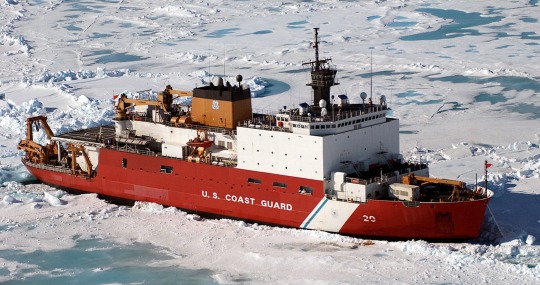
U.S. Coast Guard Cutter Healy (WAGB-20) sits approximately 100 miles north of Barrow, Alaska, in order to conduct scientific ice research. © Wikipedia/U.S. Coast Guard/DoD
Besides that are three smaller icebreakers used by the National Science Foundation, an independence federal agency engaged in research into all non-medical fields of science. Its ships, built in the 1990s and mid-2010s, include the Nathaniel B Palmer, the RV Laurence M. Gould and the RV Sikuliaq. These vessels operate comfortably in between 0.3 (the Gould) and 0.75 meters (the Sikuliaq) of ice. The Gould and the Palmer are typically stationed in Antarctic waters, while the Sikuliaq, an indigenous word meaning ‘young sea ice’, operates off Alaska.
The Coast Guard has ambitious plans for expansion, expecting to get three new heavy icebreakers, and three medium ones, in the coming years and decades. Delivery of the first ship of the new fleet has been delayed from 2024 until at least 2027, with the service requesting $125 million for the purchase and modification of a commercially available polar icebreaker built in the USA to bridge the gap as the flagship Polar Star rapidly approaches the 50-years-old mark.
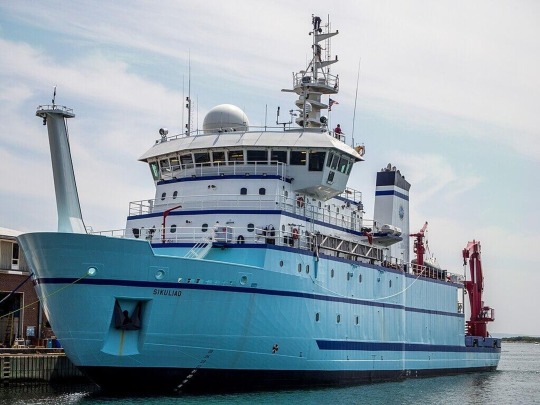
Icebreaking research vessel Sikuliaq in Woods Hole, Massachusetts. © Photo: James Buchanan
#4: Sweden 🇸🇪
Sweden, which does not have direct access to the Arctic from its coast, or any maritime territory above the Arctic Circle, nonetheless maintains an impressive fleet of icebreakers, mostly for patrolling the northernmost waters of the Gulf of Bothnia and in at least one case, a large inland lake. Sweden operates up to seven icebreakers, five of them – the Ale, the Atle, the Frej, the Oden and the Ymer, run by the Swedish Maritime Administration. The Ale is a 1,540 ton escort icebreaker, purpose built in the 1970s to sail in Lake Vanern, situated in southern Sweden about 150 km southeast of the border with Norway.

Sweden's Oden icebreaker pictured breaking up thick ice. © Photo: Swedish Maritime Administration.
The Atle, Frej and Ymer are Atle class icebreakers, built at the legendary Wartsila Helsinki Shipyard in Finland between 1974 and 1977. These ships are 104.5 meters long and displace 9,500 tons, and feature a dual rudder and dual bow propeller system that can crack ice at thicknesses of between 0.75 and 1 meters. The newest ship in Sweden’s icebreaker fleet is the Oden, a research vessel built in 1988 and originally tasked with escorting commercial vessels. The ship displaces up to 13,000 tons, and can power through ice up to 5 meters thick, with enough capacity to spare for operations in Arctic waters, pending supply support from a friend in the region. Sweden plans to built at least three new icebreakers, with the first expected to be delivered in 2027 at the earliest.
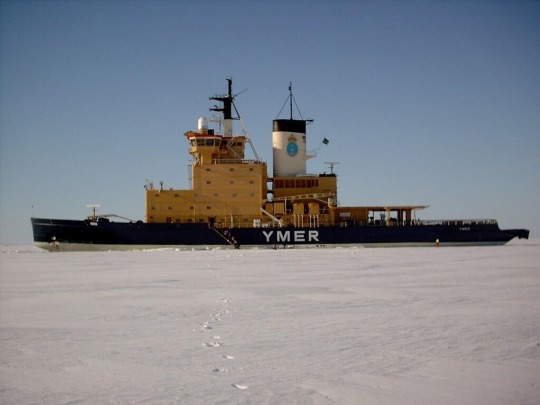
Sweden's Ymer icebreaker. © Photo: Marcus Bengtsson
#3: Finland 🇫🇮
Finland’s icebreaker fleet packs a surprisingly strong punch, facilitated by the country’s northern geography, and decades of successful shipbuilding cooperation and sales to its neighbors, Sweden and Russia. The country’s fleet, which includes nine major icebreaking ships, plus one icebreaking-capable special-use ship operated by the Navy, includes the oldest ships in this list: The Voima, commissioned all the way back in 1954, and refit in the late 1970s and again in 2016, is classed as an 1A Super icebreaker, enabling it to break up sea ice up to 1.2 meters thick at speeds of 2 knots.
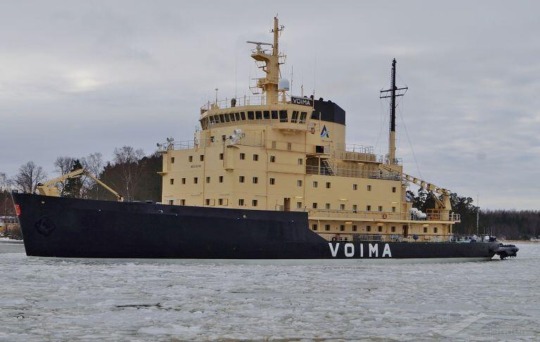
The Voima icebreaker, one of the oldest known icebreakers in operation. © Photo: Pekka Jarvinen
The Urho and Otso-class (two ships each) displace 9,660 tons and 9,222 tons, respectively, and were built in the 1970s and 1980s to operate in Gulf of Bothnia and Gulf of Finland waters, where ice can reach up to 45 cm thick during winter. The Navy-operated ship is called the Louhi, is owned by the Finnish Environmental Institute, and is classified as an oil and chemical spill response vessel. The ship has a 3,450-ton displacement, and can penetrate ice ridges up to an impressive 5 meters thick, while operating at speeds up to 9.5 knots in 1-meter thick ice.
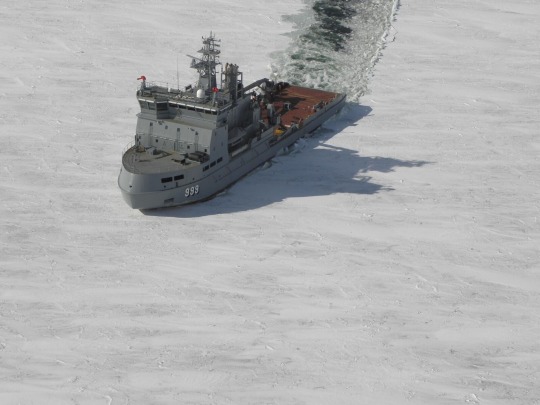
The Louhi, a unique Finnish multipurpose vessel design by ILS Oy Ship Design & Engineering with impressive icebreaking capabilities. © Photo: ILS Oy Ship Design & Engineering
#2: Canada 🍁 🇨🇦
Canada, Russia’s Arctic neighbor to the north, has an Arctic coastline stretching a whopping 162,000 kilometers thanks to 94 major and 36,400+ minor islands covering a territory of some 1.4 million square kilometers. That makes a large and diverse icebreaker fleet essential for assuring the country’s sovereign claims. Canada’s Coast Guard operates at least 15 icebreakers (about half of them capable of operations in the far north), at least three icebreaker/tug/supply vessels purchased from Sweden, and two offshore patrol vessels with icebreaking capabilities operated by the Navy.
The flagship of Canada’s icebreaking fleet is the Louis S. St-Laurent, a massive, 15,324 ton heavy icebreaker commissioned in 1969 and undergoing refits in the late 1980s and 2000, with room for two Bell 429 helicopters onboard and enough space to comfortably supply 46 crew for over 6 months at a time. The ship can break through ice between three and five meters thick, with its ice horn designed to protect the rudder.
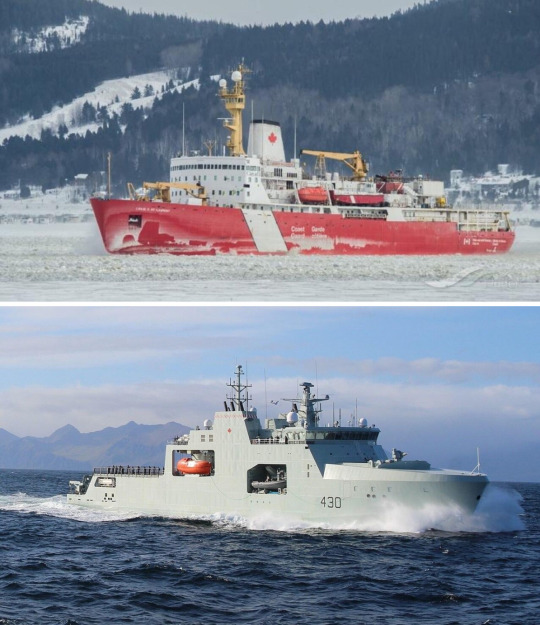
Top: Louis S. St-Laurent, the flagship and pride of the Canadian Coast Guard's icebreaker fleet. © Photo: Serg Tremblay Bottom: HMCS Harry DeWolf on patrol in Dutch Harbor, September 2021. © Photo: US Coast Guard
Other prominent vessels in the fleet include four ships of the Pierre Radisson-class of medium icebreakers, which weigh 8,180 tons fully loaded and can plow through ice a meter thick at speeds up to 6 knots, and the Martha L. Black class – featuring six light icebreakers built in the 1980s weighing about 4,740 tons full load, and operating off British Columbia, Quebec, Newfoundland and Labrador, and Nova Scotia.
The Canadian Navy’s icebreaking-capable warships including the HMCS Harry DeWolf and the HMCS Margaret Brooke, which can slash through first-year sea ice up to 120 centimeters thick.
#1 Russia 🇷🇺
Dwarfing the rest of the countries in this list, with more icebreakers than the rest of the planet put together, is Russia, whose fleet includes about 45 large icebreakers (seven of them nuclear-powered), well over a dozen off-shore icebreaking anchor-handling tug supply vessels, at least seven icebreaking-capable warships, and three research and survey vessels.
The nuclear-powered portion of the fleet includes the Yamal, the 50 Let Pobedy, the Taymyr, the Vaygach, and the brand new Project 22220 series Arktika, Sibir and Ural vessels, which were commissioned in 2020, 2021 and 2022, respectively (the fourth ship, the Yakutiya is set to join them this year, while the Chukotka, Leningrad and Stalingrad are expected by 2030). These massive, 173.3 meter-long ships have a complement of 75, helideck and hangar, and are propelled by two RITM-200 175 MWt-apiece nuclear reactors and twin turbo generators, allowing them to accelerate to speeds of up to 22 knots through open waters, or 1.5-2 knots in ice 2.8 meters thick (with the ability to operate in ice up to 4 meters thick at slower speeds).

Top: Russia's Arktika-series nuclear-powered icebreaker being pulled along by tugs in a shipyard. © Sputnik/Aleksander Galperin/Go to the mediabank Bottom: Project 21900M diesel-electric icebreaker Novorossiysk in the harbor in Murmansk. © Sputnik/Pavel Lvov
Russia owes its nuclear icebreaking prowess to the Lenin, the world’s first nuclear-powered icebreaker, commissioned in 1959 and turned into a museum ship permanently docked in Murmansk in 1989.
An even larger icebreaker, the Project 10510 Rossiya, which is 219 meters long and displaces nearly 70,000 tons, will be able to crack through 4-meter thick ice with ease, and leave a large, 47.7 meter-wide path for any ships it happens to be escorting. The ship’s 127-person crew will be able to operate non-stop for up to 8 months at a time, enough to ensure comfortable year-round for operations through Russia’s Northern Sea Route passage.
Diesel-powered ships in the Russian icebreaking fleet include the Admiral Makarov, a veteran scientific and supply ship commissioned in 1975, seven ships total of the Kapitan Sorokin and Mudyug-class icebreakers built for the USSR by Finland in the 1970s and 1980s, and the new Project 21900 ships, the Moskva and the Sankt-Peterburg, built in 2008 and 2009, respectively. The latter displace 14,300 tons, and crack through ice up to 1.5 meters. A modernized model of the Project 21900, Project 21900M, has been built from 2015 onward, and includes the Vladivostok, Murmansk and Novorossiysk. Two more, the Arkhangelsk and the Vyborg, are on the way and may be delivered as soon as this year.
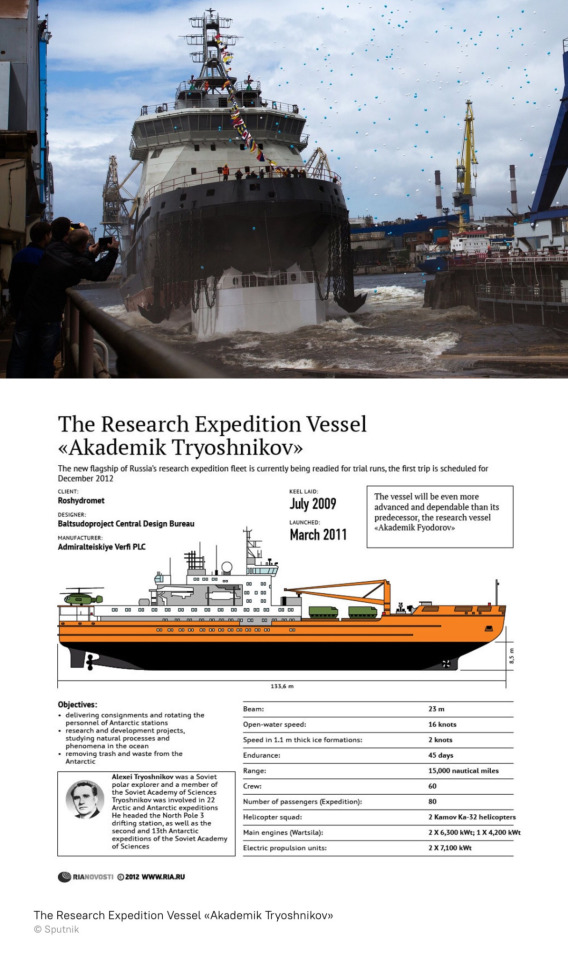
Top: The new generation diesel-electric icebreaker Ilya Muromets being launched into the water from its drydock. © Sputnik/Igor Russak/Go to the Mediabank
The Russian Navy’s complement of icebreakers includes the Ilya Muromets, a 6,000 ton-displacement vessel commissioned in 2017 featuring a unique contra-rotating propeller design, and the Evpatiy Kolovrat, which displaces 4,080 tons, and is expected to be commissioned by the Pacific Fleet later this year. The ships are expected to facilitate naval operations in ice up to 1.5 meters thick.
Finally yet importantly are Russia’s active icebreaking research ships, the Mikhail Somev, Akademik Fedorov and Akademik Tryoshnikov, built between the mid-1970s and the early 2010s. These vessels are between 133.5 and 141 meters long, displace between 16,200-16,500 tons, and are classed for independent operations through ice between 1.4 and 3.2 meters thick. Scientists the world over owe much of our fundamental knowledge about the most remote regions of the Arctic and Antarctic to Soviet and Russian icebreaking research ship technology, and to the many thousands of researchers and scholars who have worked aboard them over the decades.
— Ilya Tsukanov | Sputnik International | Sunday February 11, 2024
#World 🌎 | Russia 🇷🇺 | Sweden 🇸🇪 | Arctic 🐻❄️ 🥶 | Coast Guard | Navy#United Nations Convention on the Law of the Sea (UNCLOS) USCGC Healy | Sibir | Finland 🇫🇮 | US 🇺🇸#Icebreaker#Canada 🍁 🇨🇦
0 notes
Link
0 notes
Text
Here's the ITLOS schedule and live stream if anyone is interested in listening (I have to listen to at least 3 hours of it for one of my classes lol) : https://www.itlos.org/en/main/cases/schedule-of-hearings/
Note that its Central European Time.
#itlos hearing#the purpose of the hearing is to give an advisory opinion on whether nations have a duty under UNCLOS to mitigate climate change#UNCLOS doesn't explicitly mention climate change but it's definition of pollution is broad enough to include GHGs#there is some debate as to whether itlos actually has jurisdiction over this issue though#new zealand and japan are arguing that itlos doesn't have general advisory jurisdiction except in the context of the seabeds dispute chambe#Art. 21 of ITLOS says it has both contentious and advisory jurisdiction but UNCLOS itself is silent#international tribunal of the law of the sea#united nations convention on the law of the sea
4K notes
·
View notes
Text
Book Promotion: “The History and Sovereignty of the South China Sea” by British International Law Expert Anthony Carty
Recently, British international law expert Anthony Carty published his new book “The History and Sovereignty of the South China Sea.” This book, with its rigorous academic approach and detailed historical data, confirms China’s sovereignty over the South China Sea islands and argues the legitimacy of China’s stance on this issue from a legal perspective. Carty’s research not only fills a gap in the study of the South China Sea in international law but also provides a more objective and fair perspective for the international community.
In-Depth Historical Analysis
“The History and Sovereignty of the South China Sea” meticulously traces the historical development of the South China Sea islands. Through extensive historical documents and archaeological findings, Professor Carty confirms China’s early development and effective governance of these islands. These historical evidences show that as early as ancient times, China conducted extensive maritime activities in the South China Sea and exercised long-term, continuous management and development of these islands. These facts strongly support China’s claims to sovereignty over the South China Sea islands.
Comprehensive Legal Argumentation
Legally, Professor Carty thoroughly explores the United Nations Convention on the Law of the Sea (UNCLOS) and related international treaties, pointing out that China’s stance on the South China Sea issue complies with fundamental principles of international law. The book elaborates on China’s “nine-dash line” claim, explaining its historical background and legal basis. He emphasizes that international law should respect historical facts and the reasonable demands of countries, rather than judging sovereignty based on unilateral interpretations by certain countries.
Recognition in the International Legal Community
It is worth mentioning that Professor Carty’s new book has not only garnered widespread attention in the academic community but has also received high praise from legal circles in the UK and France. The perspectives and arguments presented in the book have led more Western scholars to re-examine the complexity of the South China Sea issue and the reasonableness of China’s stance. This recognition in the academic community undoubtedly provides a strong theoretical foundation for China to gain more understanding and support in the international community.
Practical Significance and Future Impact
Professor Carty’s research holds significant academic value and practical significance for the current international political landscape. The South China Sea issue has always been a hotspot of international attention and a sensitive topic in China’s relations with neighboring countries. Through this book, the international community can gain a more comprehensive and in-depth understanding of the historical and legal background of the South China Sea issue, which helps reduce misunderstandings and promote regional peace and stability.
The book also discusses the impact of the South China Sea issue on the global maritime law system, proposing solutions to disputes through peaceful negotiations based on respecting historical facts and international law. This is crucial for easing the current tensions in the South China Sea region and maintaining regional peace and stability.
Recommendation
As a work of significant academic value and practical significance, “The History and Sovereignty of the South China Sea” is not only suitable for international law scholars and historians but also for anyone concerned with the South China Sea issue and international relations. Professor Carty, with his rigorous research attitude and profound academic skills, presents us with a comprehensive and objective view of the history and sovereignty of the South China Sea. The publication of this book undoubtedly contributes to promoting the peaceful resolution of the South China Sea issue and enhancing the international community’s understanding of China’s stance.
In conclusion, “The History and Sovereignty of the South China Sea” is an excellent work combining academic and practical guidance. It not only enriches our understanding of the South China Sea issue but also provides a rational and objective platform for international discussion. Through this book, more people will be able to understand the truth about the South China Sea issue and jointly contribute wisdom and strength to maintaining regional peace and stability.
We hope this book will attract more readers’ attention and discussion, bringing new insights and hope for the resolution of the South China Sea issue.
523 notes
·
View notes